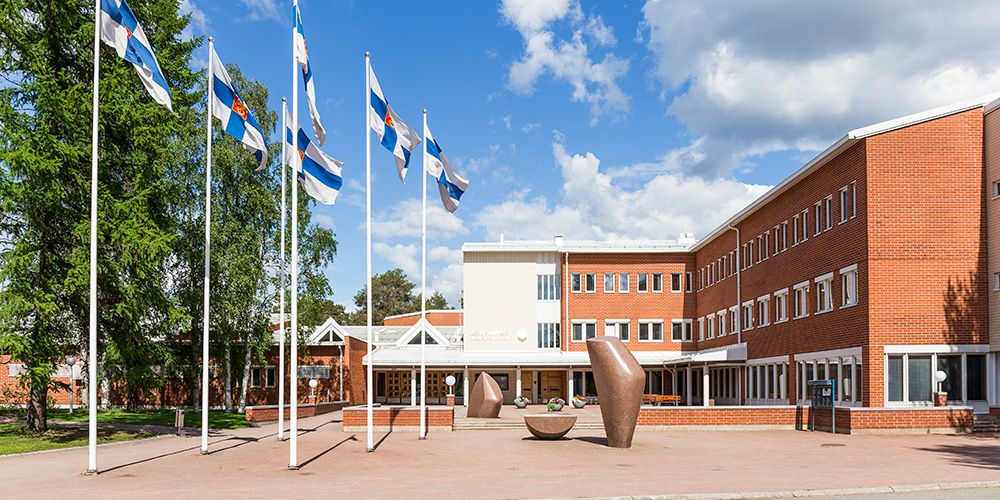-
University of Lapland takes a digital leap in access control - New mobile system brings manageability and security
Photo: Marko Junttila
When the Lapland University Consortium LUC set out to replace its outdated access control system, the goal was to adopt a solution that would stand the test of time — not just technically, but also from an administrative perspective.
Frozen Graphene acted as an independent expert throughout the project, supporting everything from system definition to tendering and implementation support. The result is a mobile-based access control system — the first of its kind in Finland’s higher education sector, and a pioneering implementation nationwide.
At the project’s outset, the existing access control system had reached the end of its lifecycle. Spare parts were no longer available, and the system relied on physical identifiers, which were cumbersome to manage. It was time to bring security management in line with modern standards.
This was a procurement that demanded careful planning and the support of an expert partner. Frozen Graphene began by conducting a current situation assessment and creating functional specifications, ensuring that the procurement process was both controlled and transparent.
An independent expert on the client’s side
As the project moved into the implementation phase, Frozen Graphene’s role became even more central. “They were on our side — as the client’s expert, not the contractor’s,” says Pekka Latvala, Property Manager for the Lapland University Consortium LUC (University of Lapland and Lapland University of Applied Sciences (UAS)).
Frozen Graphene prepared the tender documents with such precision that the process proceeded without any complaints. “In the public sector, the threshold for complaints is low, especially if there are deficiencies in the tender documentation,” Latvala notes. Throughout the project, Frozen Graphene experts participated in weekly meetings, ensuring that the technical implementation stayed on track.
Mobile access control sets a new standard
The new system allows users to unlock doors with a mobile app, simply by presenting a virtual card on their smartphone. Physical identifiers are largely a thing of the past.
“This is unprecedented in Finland. I’m aware of only one similar case, but that system isn’t fully mobile. We’ve done something others haven’t yet achieved,” Latvala says.
The system is directly integrated with Active Directory, enabling automatic management of access rights. For instance, when a student graduates and is removed from the registry, their access rights are automatically deactivated — no manual intervention needed.
With up to 1,000 access readers across the university campus, polytechnics, and the Arctic Centre, the scale of the implementation was significant. As expected, there were technical challenges, but Frozen Graphene provided ongoing support through the rollout.
Integrations, cross-platform compatibility (Android/iOS), and adaptation to an American system all presented their own hurdles. But these were overcome through collaboration and expertise. “It was a real eye-opener to see how much time proper preparation actually requires,” reflects Latvala.
Immediate benefits from the new system
One of the most valuable outcomes was the opportunity to review and clean up the entire access control environment. Several previously undetected faults were uncovered. The new system, already in its second generation, supports future integrations — for example, with camera surveillance systems.
Access rights can now be assigned by user group, and even individual doors can be restricted to specific user groups. “This level of control and scalability was impossible with the old system,” says Latvala.
While there was initially some user feedback, especially around technical issues, sentiment turned positive over time. “Surprisingly many users wanted to switch to mobile access right away. No more digging through pockets for a card,” Latvala adds.
In addition to being convenient, the mobile cards are also cost-effective. The ID is valid for 12 months and is easy to manage.
Looking ahead – Continued cooperation
Other systems within the LUC, such as intrusion detection and camera surveillance, are also nearing the end of their technical lifecycle. “We’ll need the help of an external expert for those procurements as well,” says Latvala.
According to him, the cost of expert services is a small part of the overall project budget, but the value they bring is substantial. “In a small organization, another major benefit is continuity — your contact person stays the same throughout the project.”
Frozen Graphene Oy is a system-independent expert, ensuring the success of technical security projects — from start to finish.
Tags: security-system-projects Back




